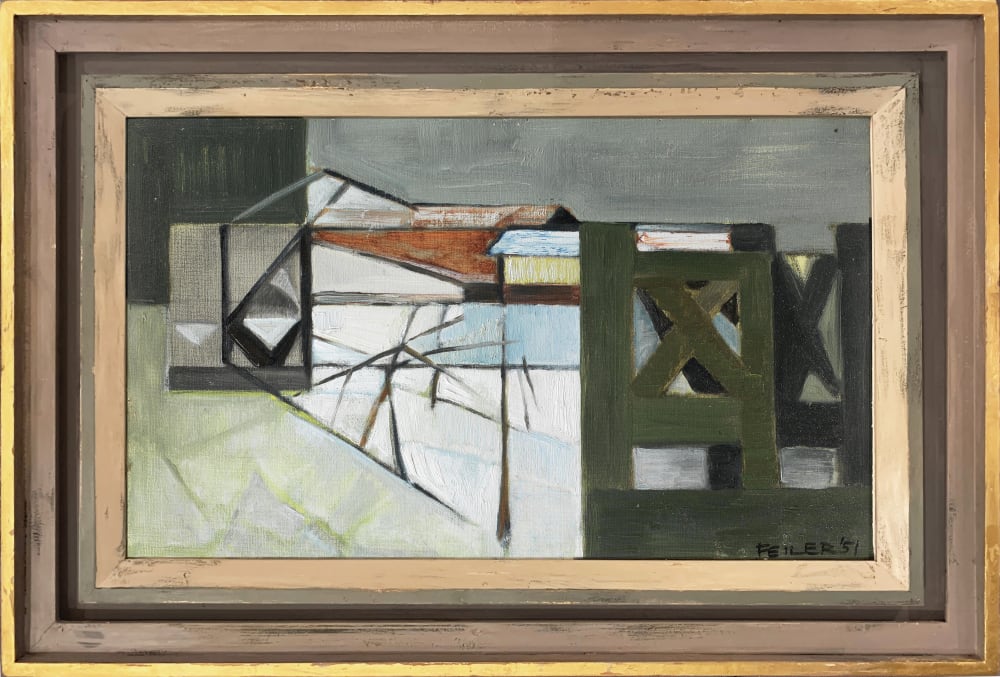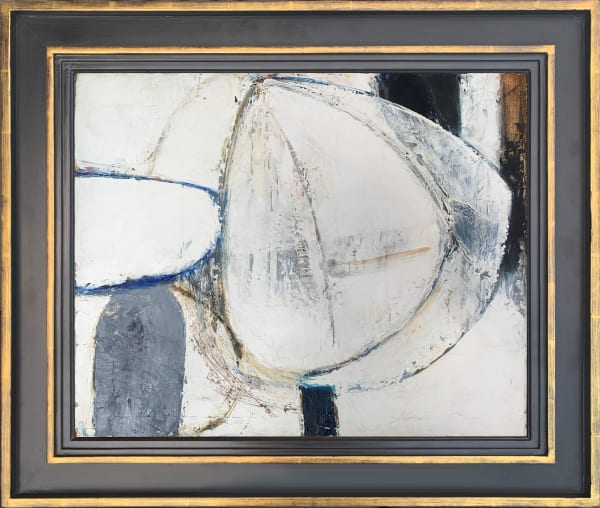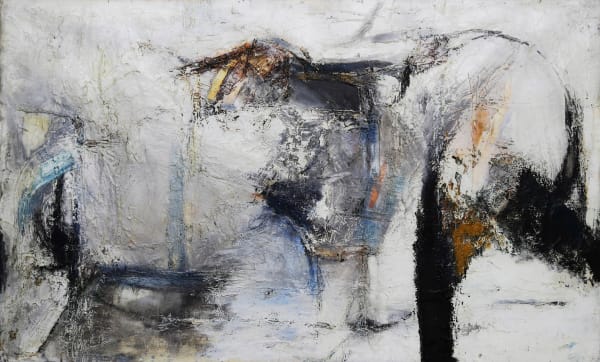
Landing Stage Falmouth (1951) by Paul Feiler
Paul Feiler 1918-2013
Framed: 45.2 x 66.5 cm (17 3/4 x 26 1/4 ins.)
Provenance
With Royal West of England Academy, Bristol, 3 January 1953, where acquired by Professor Lawrence Ogilvie.
The Ogilvie Collection.
Exhibitions
London, Leicester Galleries, 1952.
Bristol, Royal West of England Academy, Centenary Exhibition, January 1953, cat.no.421.
London, Redfern Gallery, Paintings by Paul Feiler, 29 January-21 February 1953, no.49.
Bristol, Bristol City Art Gallery, 1987-1990 (on loan).
Bristol, Royal West of England Academy, A Cornish Perspective, June 2009.
Publications
The Studio, October 1954 (Illustrated)
The genesis of Landing Stage Falmouth (1951) really took place in 1949 because it was that year that Paul Feiler first visited Cornwall meeting up with Slade School friends Patrick Heron and Bryan Wynter and being introduced to Peter Lanyon, who became a close friend. That year also Feiler’s former Euston Road mentor Victor Pasmore underwent a much publicised conversion to abstraction; a shift that had an equally seismic impact on Feiler's art. He later recounted that Pasmore 'had a great influence on me as far as my changing from being a very willing student doing academic work to becoming a bit of a revolutionary, on a very minor scale... I felt that if he can do it, so can I' (Paul Feiler, Abstract Artists in Their Own Words, BBC films, 2014).
Landing Stage Falmouth is one of the earliest and most accomplished works borne from these new dual interests in abstraction as a means of artistic expression, and Cornwall as a source of subject matter. Whilst Feiler has retained figurative elements with the supporting beams of the landing stage and an inference of buildings and roofs, these have been reinterpreted to form an abstracted composition of juxtaposed planes and lines. Such abstractions of the world before him, often as in this case depicting part of the Cornish coast, became the fundamental concern for Feiler throughout the next decade. Landing Stage Falmouth holds further significance with its extraordinary provenance and exhibition pedigree.
The painting was first exhibited at the Leicester Galleries in 1952 and the following year purchased by Professor Lawrence Ogilvie from the Centenary Exhibition at Bristol’s Royal West of England Academy. Ogilvie and his wife formed a superb collection of 1940s and 1950s modern art including works by Barbara Hepworth, Ben Nicholson, Jacob Epstein, Keith Vaughan, Ivon Hitchens, John Tunnard and Francis Hodgkin but the core of their collection were some 10+ works by Paul Feiler. Ogilvie was a founding member and chairman of the Friends of the Bristol Art Gallery. The regard in which the present painting was held was evidenced in 1953 when Ogilvie agreed to loan the work to the Redfern Gallery for Feiler’s first and highly successful solo exhibition; Paintings by Paul Feiler, January-February 1953. It was this seminal exhibition that financed Feiler’s acquisition of a disused chapel at Kerris in West Cornwall where he was to live and work (splitting his time between Cornwall and Bristol for some years) for the remainder of his life. In October 1954 the painting was illustrated in The Studio.
Between 1987 and 1990 Landing Stage Falmouth was further loaned for public display to the Bristol Art Gallery and in 2009 the work was again publicly exhibited in A Cornish Perspective in the Royal West of England Academy. It remained in the Ogilvie Collection until 2022 and is a fascinating landmark piece in Paul Feiler’s long career.






